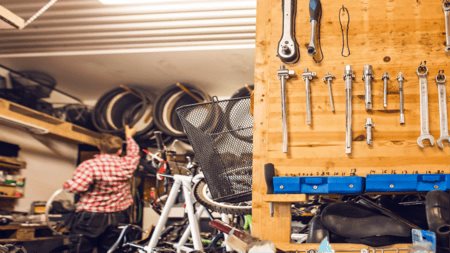As people continue to acquire more items in a super-consumer environment—essential or otherwise—it becomes clear that most homes have not been adequately designed to accommodate sufficient storage, particularly for larger items used infrequently. Some items are also hoarded for sentimental reasons.
Adding extra storage space inside the home may not be practical or desirable. The solution is to use the garage. However, if you want it to add value to the property, you’ll need to consider how the storage is created—making it practical while still allowing easy access to items when needed.
Storage solution
Although garages were originally intended for parking cars, many people now incorporate walled garages into their homes as additional rooms, while vehicles are parked under carports or in driveways.
Modern residential garages are highly versatile. People use them as workrooms for hobbies or even as bases for home businesses. Gyms, bar areas, playrooms, laundries, and man caves are commonly set up in garages. It’s no surprise, then, that garages are on the must-have list for many buyers, often adding value to a property.
Traditionally, garages have also been used to store garden tools, implements, and paint products. These items are usually stored against the walls, leaving room to park a vehicle. Common practice is to relocate anything infrequently used, broken, or awaiting repair to the garage—rather than allowing it to clutter up valuable living space. If you find yourself struggling to get out of your car due to boxes filling up the garage floor, it’s time to take action.
Decluttering may not completely solve the problem. At this point, you have two choices: install professional storage or design your own system.
The value of professional storage
As mentioned, the most common items stored in a garage include garden equipment such as lawnmowers, bicycles, washing machines, tumble dryers, and tools. These can occupy a lot of space, and since many of them are in regular use, they must remain easily accessible.
This is where professional storage installers play a valuable role. They can provide simple additions such as horizontal or vertical bicycle racks, or create full-scale, customised storage solutions. Professional installers take the time to understand your needs and design systems that work for you—this might include ample shelving for boxes and even a workshop bench or laundry area.
These professionals also understand the potential hazards of storing certain items. They know, for example, that ventilation is essential when storing clothes, linen, or chemicals.
The DIY storage solution
If you decide to create a storage system yourself, you’ll need to be strict about not storing unnecessary clutter, as it can become overwhelming over time.
Tips for creating your own storage system:
Know what is currently in your garage, and start by decluttering.
Decide what needs to be stored, and where it should be placed: on the floor, on shelves, in wall cupboards, or mounted on walls.
Create a plan that distinguishes between frequently accessed items and those used occasionally (e.g., Christmas decorations).
Consider wall-mounted storage for items like bicycles, and overhead compartments for ceiling storage.
Repurpose old kitchen cupboards, especially after a renovation.
Use storage containers to group similar items (e.g., toys). Ideally, these should be transparent with lids to protect contents.
Add clear labels to containers—this makes it much easier to identify stored items, particularly those placed higher up.
Use pegboards to hang small items like garden tools, or mop and broom organisers to keep long-handled items upright.
Ensure hazardous materials are sealed and stored correctly, and limit the quantity.
Store heavy items low and lighter items higher.
Consider your future storage needs and plan accordingly.

Sectional title garages
In sectional title estates, the law is clear: an exclusive-use area like a garage must be used for its intended purpose. Owners are generally not allowed to convert a garage into a business premises without approval from the body corporate. Limited storage is typically permitted, but you may compromise your ability to park a vehicle.
It is always best to consult with the body corporate before altering the use of your garage.
The garage and insurance
When taking out a home insurance policy, most insurers want to know where your vehicles are parked and what security measures are in place. If you declare that your car is always parked in a locked garage, but it’s routinely left outside and is then stolen, your claim may be denied.
Likewise, if you fail to maintain security measures—such as locking the garage or enabling the alarm—your claim may be rejected. If your garage lacks security features, insurance is still possible, but your premium may be higher.
When using your garage for storage or other purposes, insuring it can become complicated. Insurance companies have specific rules about what can and cannot be stored in a garage.
For example, items that pose a fire risk fall under a "duty of care" clause. You must take precautions when storing flammable liquids like oil, fuel, and paint. There are also limits to the quantities you can store. These items should never be stored near heat sources such as heaters or in direct sunlight.
Items that absolutely cannot be stored in a garage include:
Fireworks
Ammunition
Explosives
Batteries and chemicals
Poisons
Narcotics




